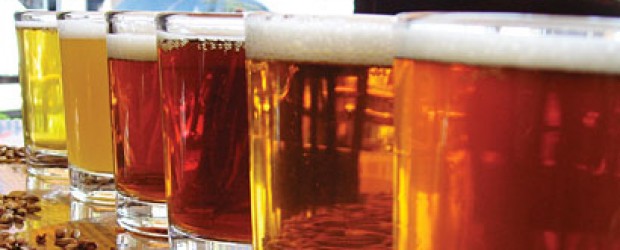So this will be my first go at brewing 1.5 gallon batches of beer. Lately I’ve had an interesting go of it with brewing beers I’ve not perfected yet. American stout and American porter came out mediocre at best. I straight dumped about 8 gallons of the stout because to me it was undrinkable. My 10 gallons of German pilsner were very nice and a great lager but I want world class. I mean hell who wants to drink 8 gallons of great lager when you want great German pilsner? So I’m going to try my hand at small batches. It’ll allow me to do induction brewing in my beer room with air conditioning. It’ll allow me to take up less room and not have to waste so much if it doesn’t end up well. Most importantly it’ll allow me quick turnover to perfect some of these recipes that require very honed in recipes and practices.
So I’d already built a small mash tun for single infusion brewing. It’s a 5 gallon water cooler. I purchased a 5 gallon induction ready pot off Amazon. Also picked up a 1800 watt induction cook top on Amazon. I already had a couple of 3 gallon better bottles I purchased a few years back to small brew lager batches. I think this small scale will give me good feedback on new recipes. It’ll also allow me to brew in the air conditioning and do it quickly. Time is always tight with kids.
This will be German pilsner rebrew of the recipe I brewed a few months back. Feedback from 2 different judging sessions was scattered at best. From what I can tell it needed improvement in two places. 1. It wasn’t bitter enough or hoppy enough. So Going to give it late hops and a bit more bitterness. 2. Improve maltiness yet make it dry. So adding a tad of melanoidin malt. Also going to make it a bit more carbonated to impress dryness since the last beer was dry enough as far as gravity was concerned.
Update 5/17/2016
So the brew day went very smooth in terms of process. I did have a few issues in regards to volume. The volume ended up a little low due to my Beersmith equipment profile being off in the calculations. The beer will be pretty close in it’s original gravity at 1.05 but I’ll be lucky to end up with a gallon. I suppose I didn’t think about the loss to trub and the boil off not being linear things when scaling down to a 1.5 gallon batch. So we’ll see how this guy ends up but I’ve already concocted the Attempt B to try again.
All in all it was a lot of fun to brew in the air conditioning with the control of the electric cook tops and the small size, weight and cost. I ordered a 1.5 gallon Torpedo keg from Morebeer.com and am looking forward to trying that out. Hoping to end up with a stack of 4 of those kegs in my kegerator along side 3 regular rotating beers so that I can experiment without having to waste or choking down a bad beer.
Recipe Details
| Batch Size |
Boil Time |
IBU |
SRM |
Est. OG |
Est. FG |
ABV |
| 1.8 gal |
60 min |
38.8 IBUs |
4.8 SRM |
1.045 |
1.009 |
4.8 % |
Style Details
| Name |
Cat. |
OG Range |
FG Range |
IBU |
SRM |
Carb |
ABV |
| German Pils |
5 D |
1.044 - 1.05 |
1.008 - 1.013 |
22 - 40 |
2 - 5 |
2.5 - 3.2 |
4.4 - 5.2 % |
Fermentables
| Name |
Amount |
% |
| Pilsner (2 Row) Ger |
3 lbs |
96 |
| Melanoidin (Weyermann) |
2 oz |
4 |
Hops
| Name |
Amount |
Time |
Use |
Form |
Alpha % |
| Hallertauer Hersbrucker |
0.55 oz |
60 min |
Boil |
Pellet |
6 |
| Hallertauer |
0.13 oz |
0 min |
Aroma |
Pellet |
4.8 |
Miscs
| Name |
Amount |
Time |
Use |
Type |
| Lactic Acid |
4.00 ml |
60 min |
Mash |
Water Agent |
| Calcium Chloride |
2.00 g |
60 min |
Mash |
Water Agent |
| Gypsum (Calcium Sulfate) |
2.00 g |
60 min |
Mash |
Water Agent |
Yeast
| Name |
Lab |
Attenuation |
Temperature |
| German Lager (WLP830) |
White Labs |
77% |
50°F - 55°F |
Mash
| Step |
Temperature |
Time |
| Mash In |
150°F |
75 min |
